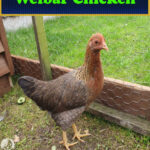Red Sun Conure: A Vibrant and Playful Parrot Species
The Red Sun Conure stands out as a vivacious and active species among the many avian companions available, and keeping one as a pet may be a very pleasant experience. The Red Sun Conure’s qualities, maintenance needs, and distinctive attributes are examined in this article here, which offers both bird fans and potential owners useful information.
Overview of the Red Sun Conure
The Red Sun Conure is a small- to medium-sized parrot that is indigenous to northeastern South America. It is also referred to as the Sun Parakeet or Aratinga solstitialis. This bird has become well-liked among avian lovers all over the world thanks to its stunning plumage and engaging attitude.
The Red Sun Conure has a flaming orange-yellow body, vivid green wings, and a blue tail, giving it a striking color scheme.
It has a small body and is between 12 and 14 inches long from beak to tail. The bird’s tiny, curved beak makes it simple for it to easily split open a variety of nuts and fruits.
What Does Red Sun Conure Eat?
A Red Sun Conure’s entire health depends on eating food that is well-balanced and nutrient-rich. Their diet should mostly consist of premium pellet food with occasional snacks and fresh produce.
Always have fresh water on hand, and stay away from giving them poisonous items like avocado, chocolate, or coffee.
Is Red Sun Conure Social Pet?
Red Sun Conures demand frequent interaction with their human caregivers and thrive on social interaction. Spending time beyond the cage, allowing for supervised discovery and play, promotes mental stimulation and prevents boredom.
A close relationship between the bird and its owner can be cultivated by routine handling and gentle instruction.
How much does a Red Sun Conure cost?
A Red Sun Conure’s price might vary depending on the breeder, region, and age of the bird, among other things. The typical price range for a Red Sun Conure is $400 to $800. To get the most precise pricing information, it’s important to consult with reputable breeders or bird stores as prices can fluctuate.
Q2: How long does a Red Sun Conure live?
Compared to several other pet birds, Red Sun Conures live relatively lengthy lives. They can survive for 25 to 30 years if given the right care, nutrition, and surroundings. With proper care and veterinary assistance, some Red Sun Conures have even been known to live more than 30 years.
Is Red Sun Conure Hard To Train?
It can be rewarding to train a Red Sun Conure. These birds are teachable because of their intellect and drive to learn new things.
Techniques for positive reinforcement, such as using praise and treats, are most effective when used during training sessions. To keep kids mentally engaged, enrichment activities like puzzle toys and harvesting games are also crucial.
Do sun conure bites hurt?
Bites from sun conures can hurt, especially if they strike out hard. Even though their beaks are not as powerful as those of larger parrot species, it is still crucial to handle them carefully and provide them with the right training to stop aggressive behavior.
Can my sun conure talk?
Sun conures can indeed imitate simple phrases and noises. Even while they might not have as broad a speaking repertoire as some other parrot species, they can pick up a few words and phrases with practice and regular engagement.
Are red factor sun conures loud?
Red parameter sun conures can make loud calls and are highly talkative. They are well renowned for their animated vocalizations, particularly in the morning and evening. If you reside in a noisy area, it is crucial to take this factor into account.
Are red factor conures rare?
Red factor conures are not particularly uncommon, however, they are less frequent than sun conures with the typical hue. A genetic mutation known as the “red factor” causes the color of the plumage to change, becoming a deeper and more intense shade of red.
What is the loudest conure?
One of the loudest conure species is the Mitred conure, also known as the Mitred parakeet. They can make loud calls and screeches that are audible from a distance, and they have a strong voices.
Frequently Asked Questions
Q1: Are Red Sun Conures noisy pets?
Red Sun Conures have a strong voice and can make vocalizations. However, with the right instruction, socialization, and care, their noise levels can be efficiently controlled.
Which conure is the biggest?
The largest conure species is the Patagonian conure, sometimes referred to as the Burrowing parrot. They can grow up to 18 inches (45 cm) long and have a sturdy physique. They differ from other conure species by virtue of their size.
Q2: Can Red Sun Conures learn to talk?
Red Sun Conures can replicate simple words and sounds, while not being particularly skilled talkers. The ability of each bird to mimic may differ.
Q3: Do Red Sun Conures require a specific diet?
An all-natural diet of pellets, fresh produce, occasional treats, and fruits and vegetables is ideal for Red Sun Conures. An interesting and wholesome diet must be offered.
Q4: Are Red Sun Conures suitable for apartment living?
Red Sun Conures tend to be vocal, therefore they might not be the ideal choice for settings where noise is a concern, such as apartments. However, their noise levels can be decreased with the right instruction and care.
Q5: Can Red Sun Conures be trained to perform tricks?
Yes, Red Sun Conures are intelligent and can be trained to perform various tricks using positive reinforcement techniques and rewards.
12. Conclusion
The Red Sun Conure is a colorful and vivacious species of parrot known for its vivid plumage and jovial disposition. These birds can bring devoted owners countless hours of joy and companionship thanks to their social nature and capacity for learning. The time, effort, and dedication necessary to ensure the welfare and pleasure of these magnificent avian companions must, however, be taken into account by potential owners.







